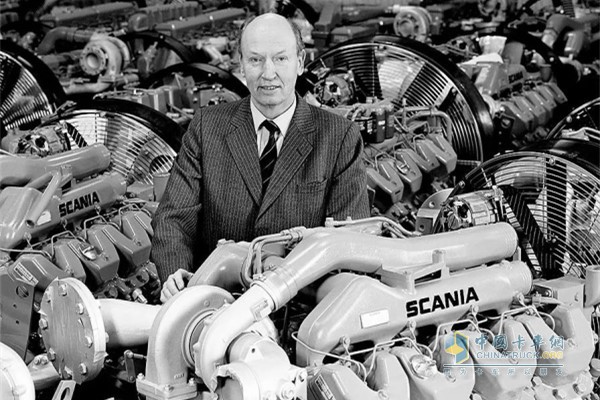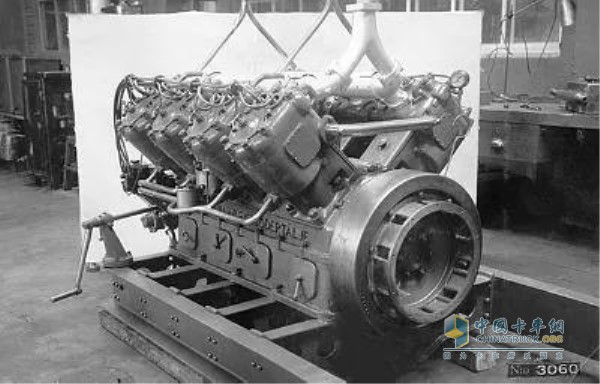Use legend to create the "growth path" of the legendary Scania V8 engine
 The father of Scania V8
The father of Scania V8 The background of the birth of V8
In the early 1960s, Scania's 8- and 11-liter six-cylinder engines produced 250 horsepower, which was able to meet the long-term transportation needs of the time. But then Gadefelt foreshadowed that truck engines would face the challenge of demanding increased power demand, especially in the area of ​​timber transportation and heavy-duty long-haul transportation.
Gadefelt is known for his approachable leadership style, and he is used to looking at the blueprint of design engineers and pointing out insightful details. Therefore, Scania made a decision in 1962, giving Gadefelt the task of developing a more powerful engine. “We realized that the engine needed about 350 horsepower to achieve good driving performance, which meant about 100 horsepower more than our other engines,†Gadefelt said in a later review of the project.
The first V8 came out
More compact flat-top trucks are a trend, not a long-headed truck made by Torpedo, which dominates post-war heavy-duty transport. But for making a more powerful truck engine, there is a question: how to install a larger inline 8-cylinder engine under the flat cab? Gadefelt and his colleagues designed a powerful but very compact power unit: 14.2 liters. 90 degree V8 engine!
 Scania 14.2 liter 90 degree V8 engine
Scania 14.2 liter 90 degree V8 engine
The first LB140 with a new engine quickly won praise from the transportation industry. The user is very fond of the appearance of the engine and is very pleased with the high output and torque curve of 350 hp, which encourages the use of low engine speeds. Of course, there is also a unique rumbling voice that will be one of the most admired features of the V8.
Carefully overcome every step, the challenge is also an opportunity
In the late 1980s, Scania was developing the largest cab of its time (that is, the 4 series that was introduced in 1995). Since there are many challenges in the design process to install a V8 engine, some people think that the V8 is no longer an indispensable option.
At that time, Scania's engineers were divided into two camps. Some favored the use of 11- and 14-liter inline six-cylinder engines to take full advantage of the company's modular system, while others emphasized V8 to Scania. The importance of the brand. Fortunately, the latter's opinion won.
A few years later, Scania encountered another new technical challenge: how to adapt the engine to the new injection technology required to comply with Euro 3 emission regulations? To solve this challenge, Scania engineers began to develop new engines. - Use a narrower 72 degree V8.
At this time, Gadefeltti reminded that the layout of the 72-degree engine would be very complicated, especially the crankshaft. Finally, he chose another jet solution under his leadership to develop a new 90-degree 16-liter engine.
Use legend to create legends
The original legend was replaced by the more powerful V8 engine that was subsequently developed, and the legendary iterative development in the market demand of different eras. 2016 coincides with the 125th anniversary of Scania, Scania has launched a new truck series. The following year, the company introduced a new V8 engine for a new generation of trucks.
There are many key factors for successfully creating a legend. The Scania V8 legend is still well-received in the industry. There are controls on the details, leaders who have a far-sighted vision for the industry, and rationality in the market. The analysis also has the persistence of brand feelings······
Reading volume: Source: Scania Sales of China: Yue FengQ: Are you trading company or manufacturer ?
A: We are factory.
Q: How long is your delivery time?
A: Generally it is 5-10 days if the goods are in stock. or it is 15-20 days if the goods are not in stock, it is according to quantity.
Q: What is your terms of payment ?
A: Payment<=1000USD, 100% in advance. Payment>=1000USD, 30% T/T in advance ,balance before shippment.
Star Discharge Valve
Star Discharge Valve,Discharge Valve,Dust Discharge Valve,Star Type Air Discharge Valve
Hebei Wangjing Environmental Protection Co., Ltd. , https://www.wjdustcollector.com